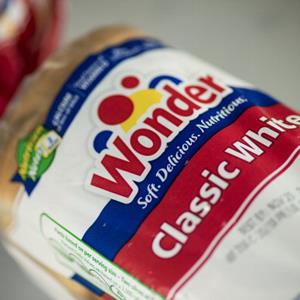Sliced bread turns 85
We take it for granted now, but getting this product ready for commercial sales was no easy task.
By Kim Peterson
 Bread has been around for ages, but commercially sliced and packaged bread doesn't even have a century under its belt yet.
Bread has been around for ages, but commercially sliced and packaged bread doesn't even have a century under its belt yet.Sliced bread, a phenomenon so beloved that it spawned its own "greatest thing" catchphrase, turned 85 years old this week, The Atlantic notes. The first wrapped package of sliced bread was sold on July 7, 1928, by the Chillicothe Baking Company in Missouri.
With what seems like 5,000 different kinds of sliced bread on grocery shelves these days, it's hard to imagine a time when bread was only sold whole and freshly made. It took quite a while to develop a machine that could slice an entire loaf of bread at once and package it for public sale.
A jeweler from Missouri named Otto Frederick Rohwedder invented such a machine in 1912, according to The Atlantic, but his machine was destroyed in a fire. He filed a patent for an improved machine 15 years later. It didn't produce the prettiest sliced bread, however, and other inventors would tinker with the design.
A St. Louis baker bought Rohwedder's machine and tweaked it so that it would slice loaves in cardboard trays and wrap them in wax paper, writes Don Voorhees in his book "Why do Donuts Have Holes?: Fascinating Facts About What We Eat and Drink." Chillicothe, named for its hometown in Missouri, was the first commercial bakery to give the machine a shot.
But sliced bread didn't really take off nationally until -- you guessed it -- Wonder Bread came along. Continental Baking began slicing and shipping Wonder Bread in the 1930s, although consumers were skeptical that this pre-sliced bread would not dry out, according to the Where Food Comes From site. No one was praising the "greatest thing since sliced bread" just yet.
World War II brought all bread slicing to a halt due to a steel shortage. The bread slicers returned in 1945, however, and the pre-cut Wonder Bread took off.
By the way, Wonder Bread took a huge bite out of two diseases, beriberi and pellagra, that had plagued the country until then. That's because Continental Baking began enriching the bread with vitamins and minerals in the 1940s. The bread's impact on those two diseases is sometimes called the "quiet miracle," according to Where Food Comes From.
No comments:
Post a Comment